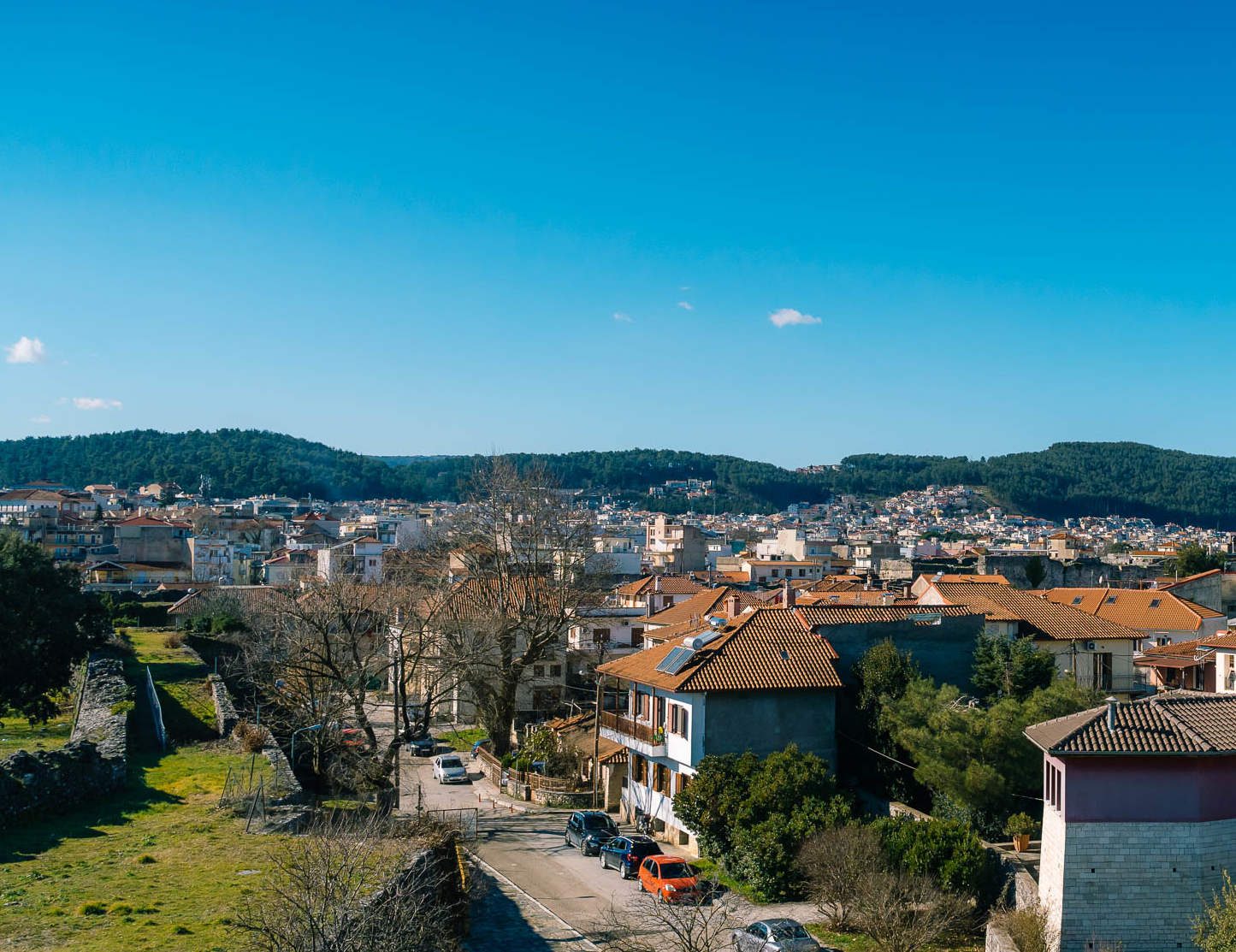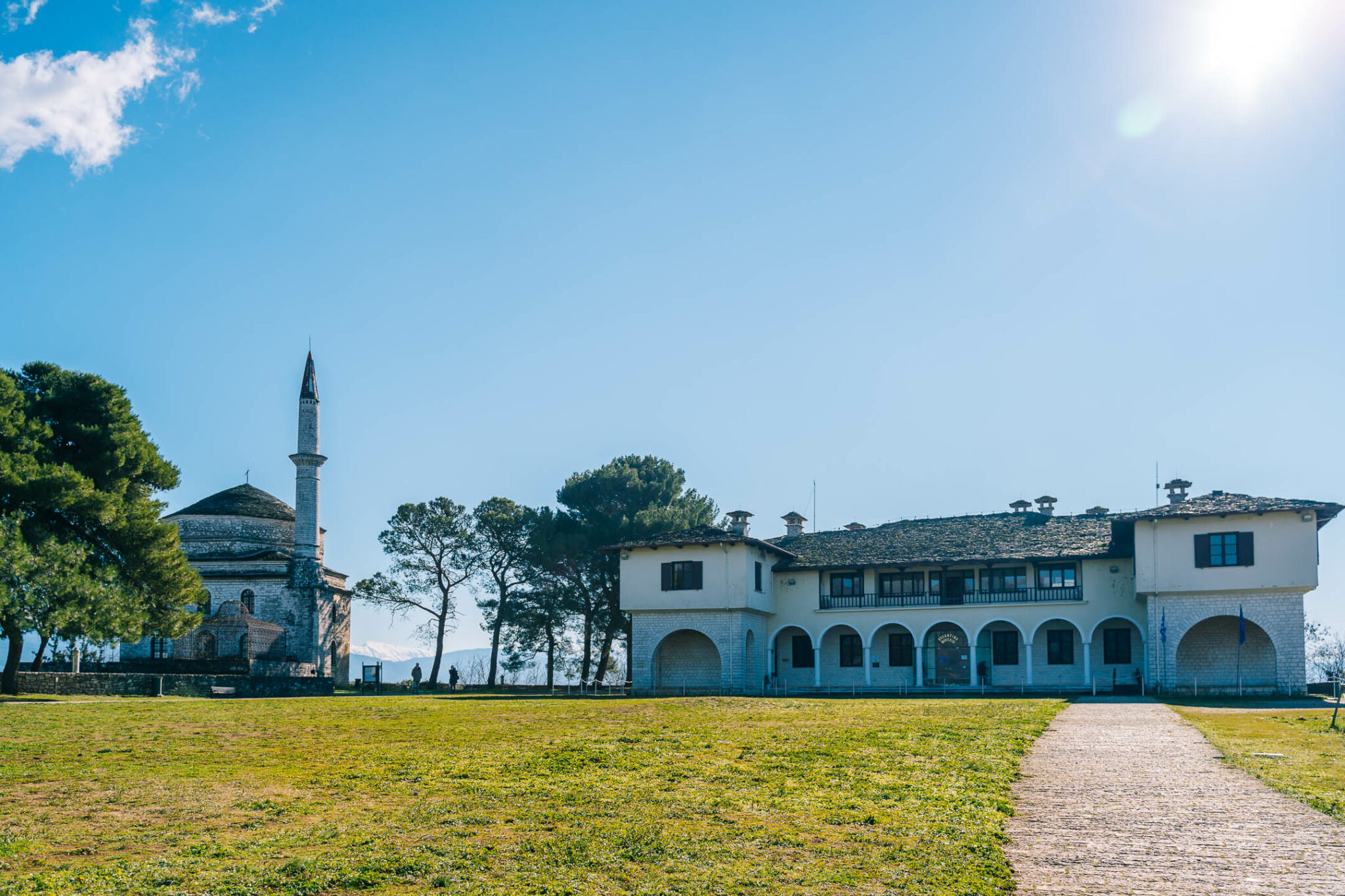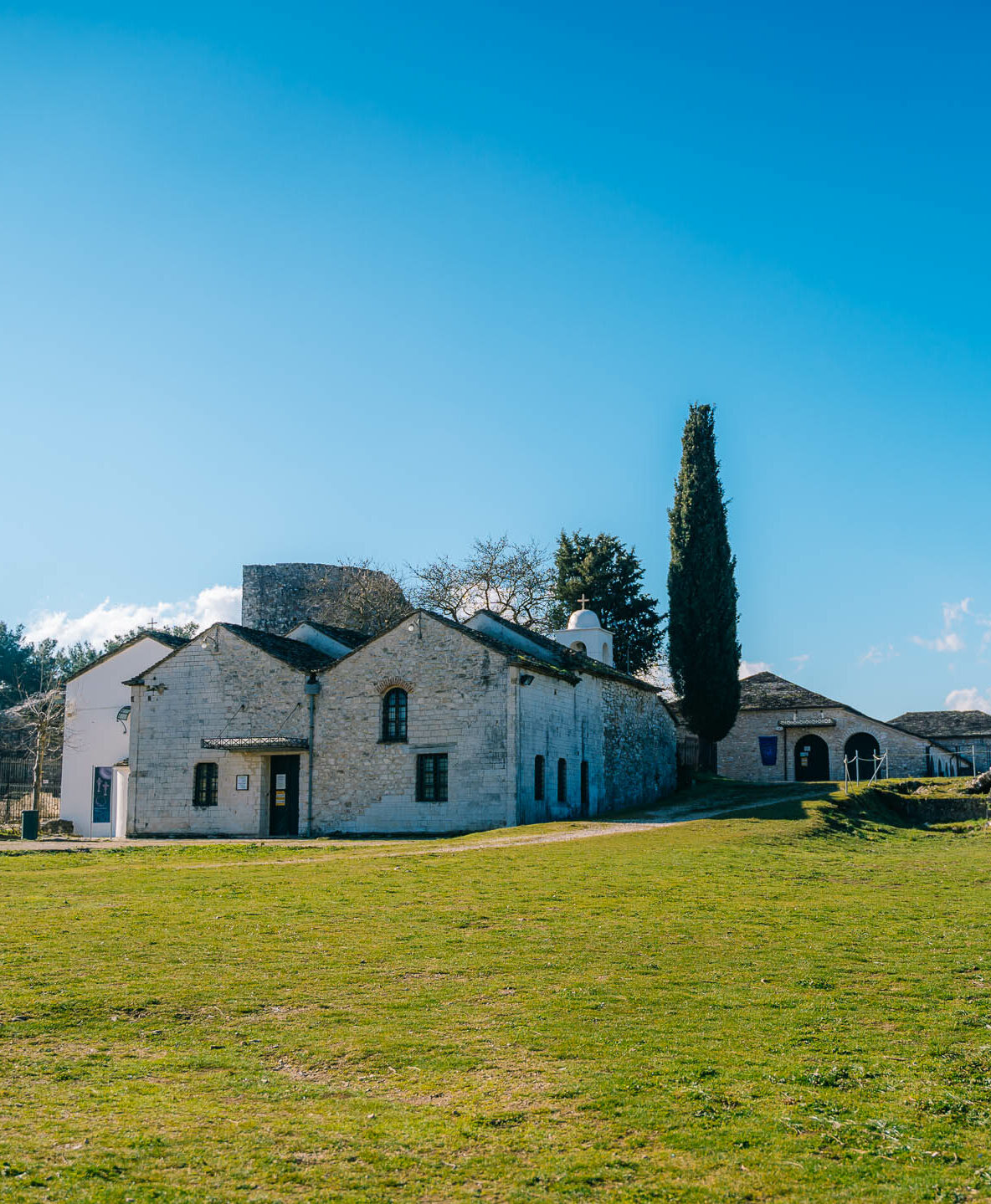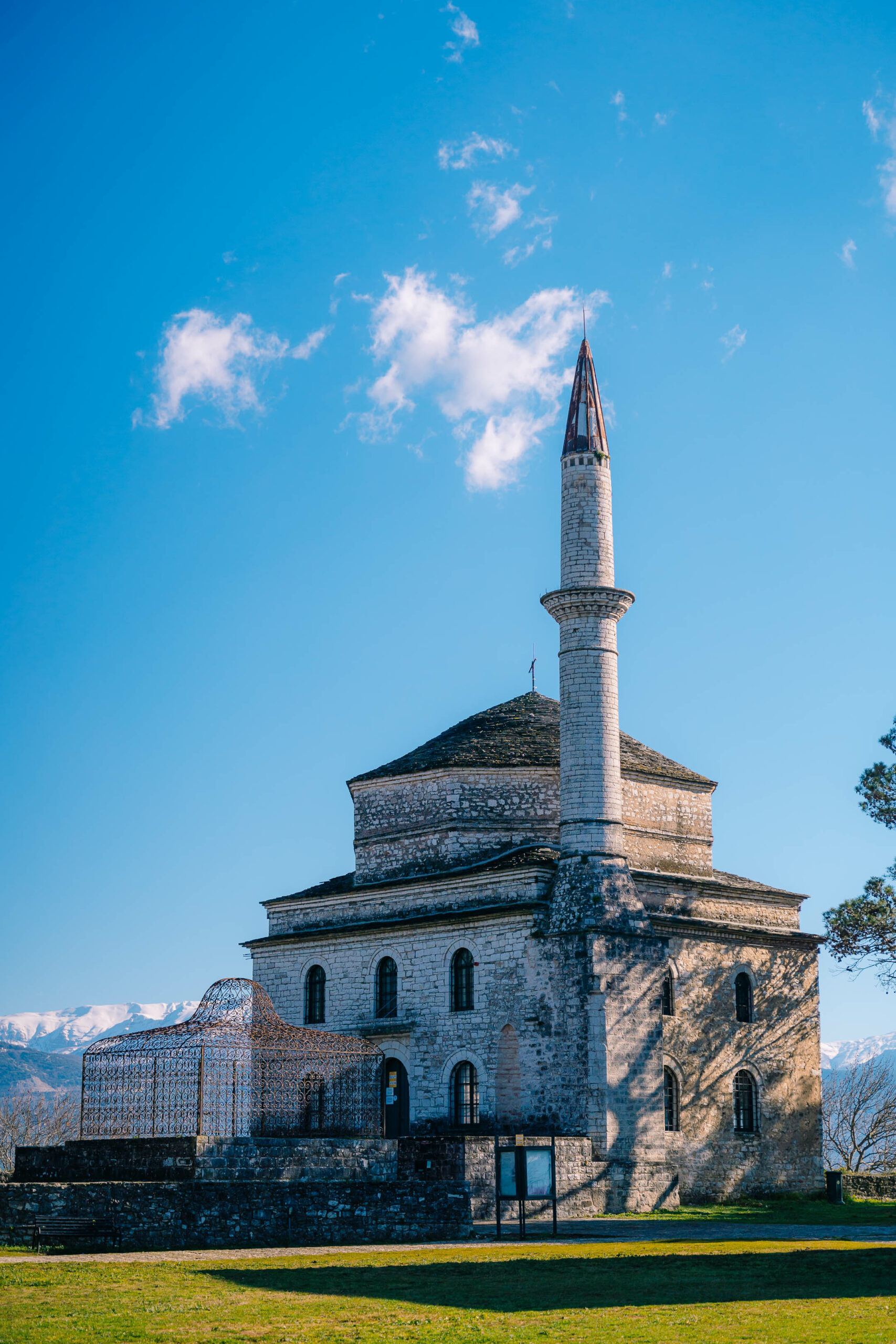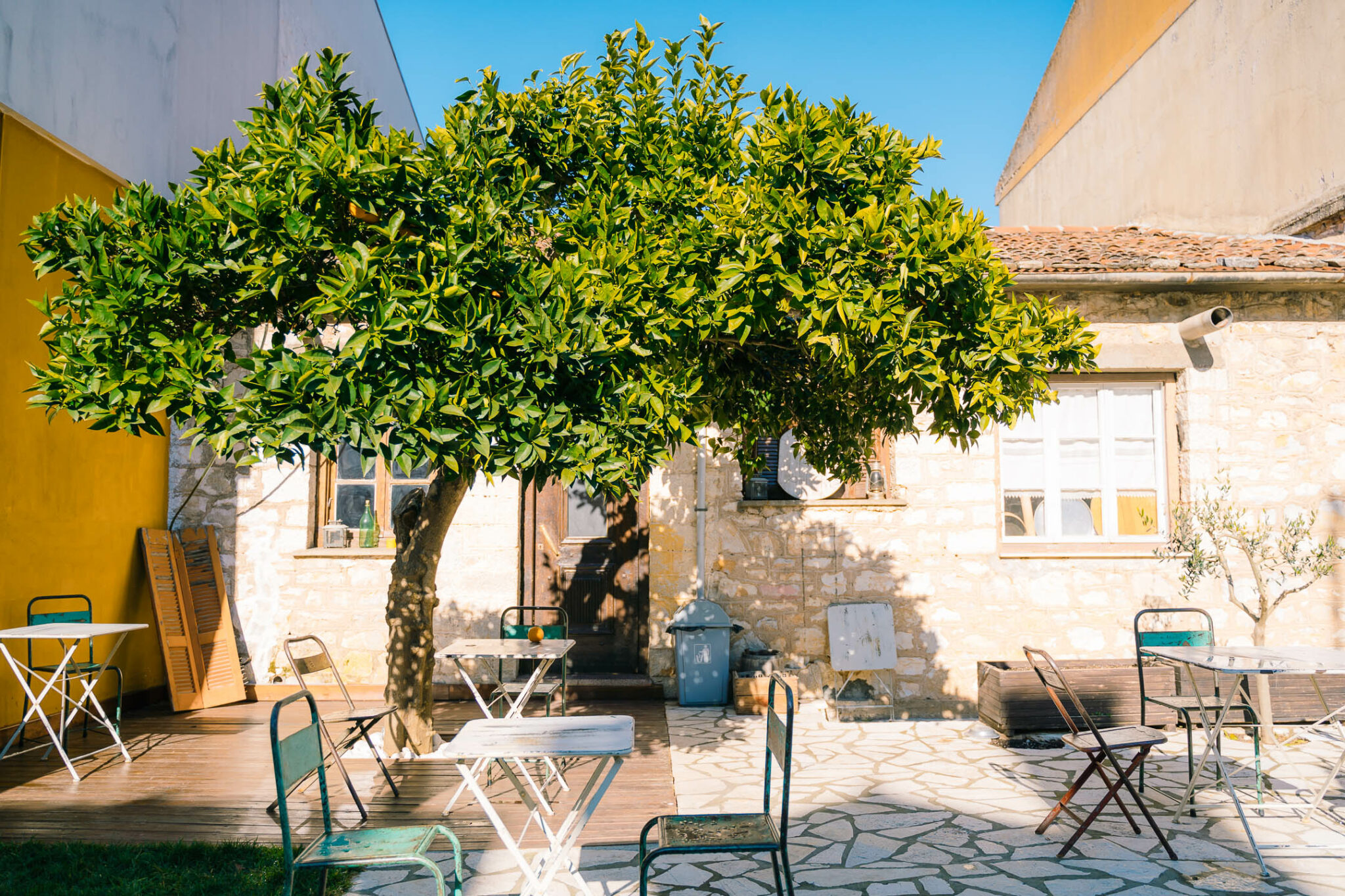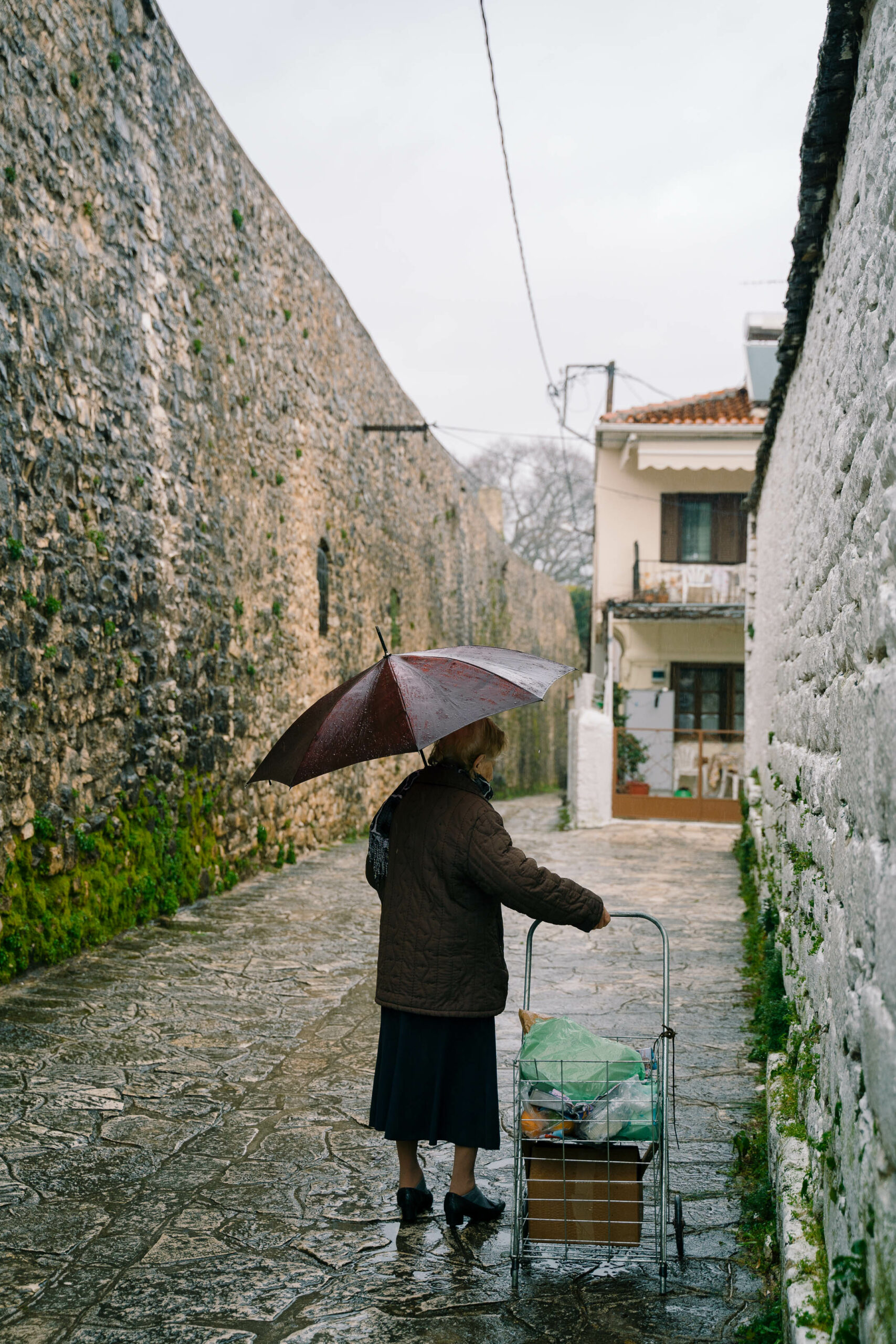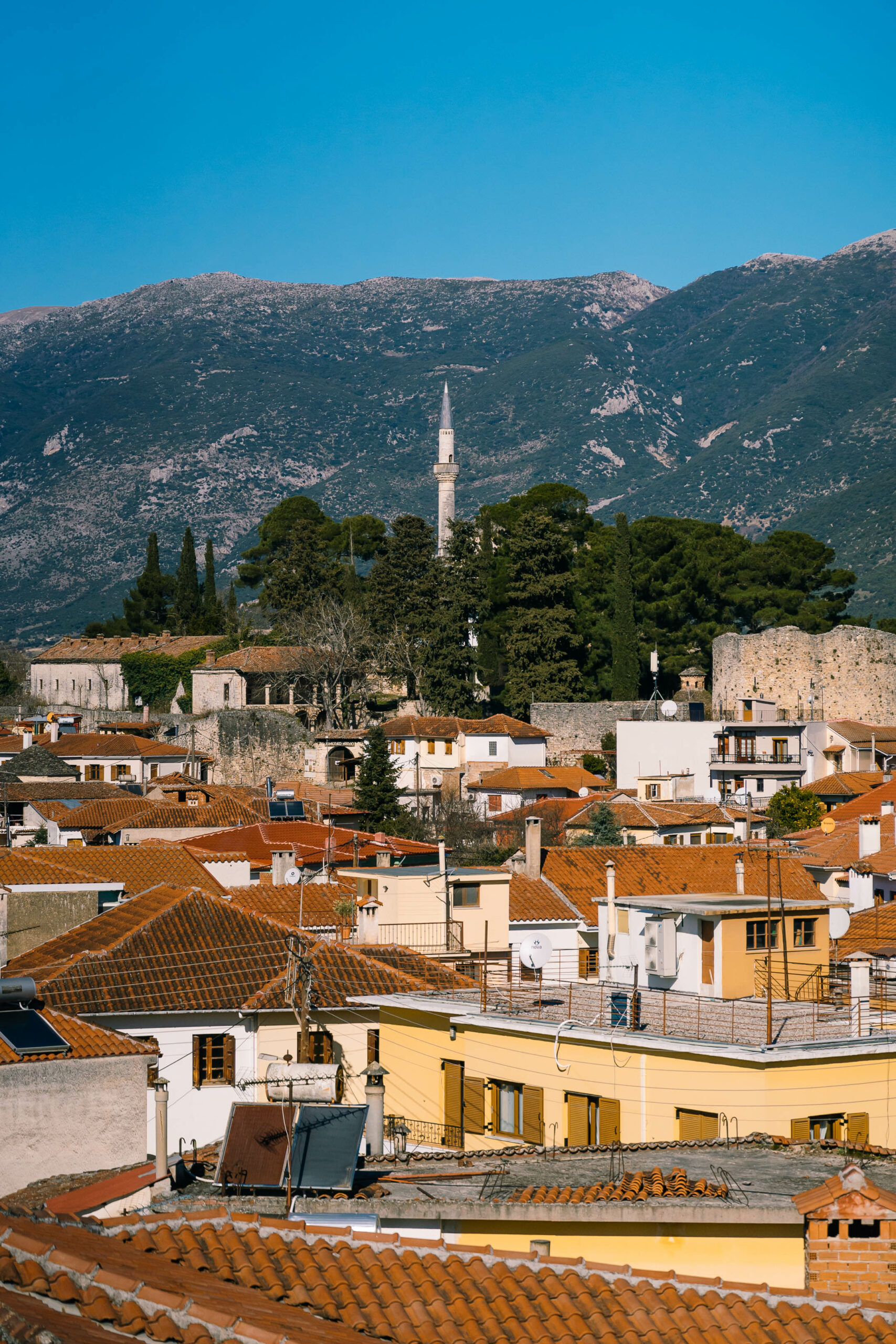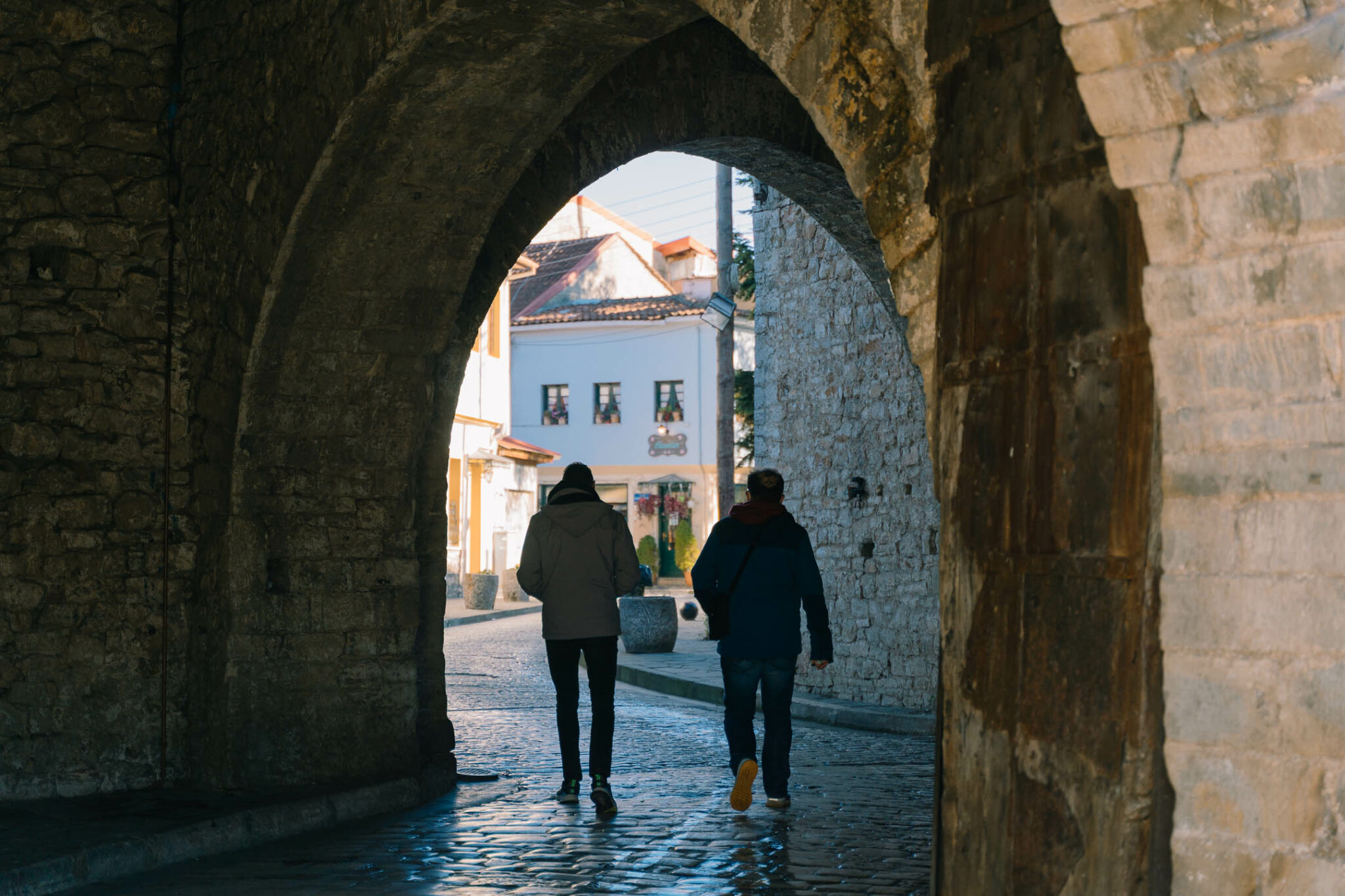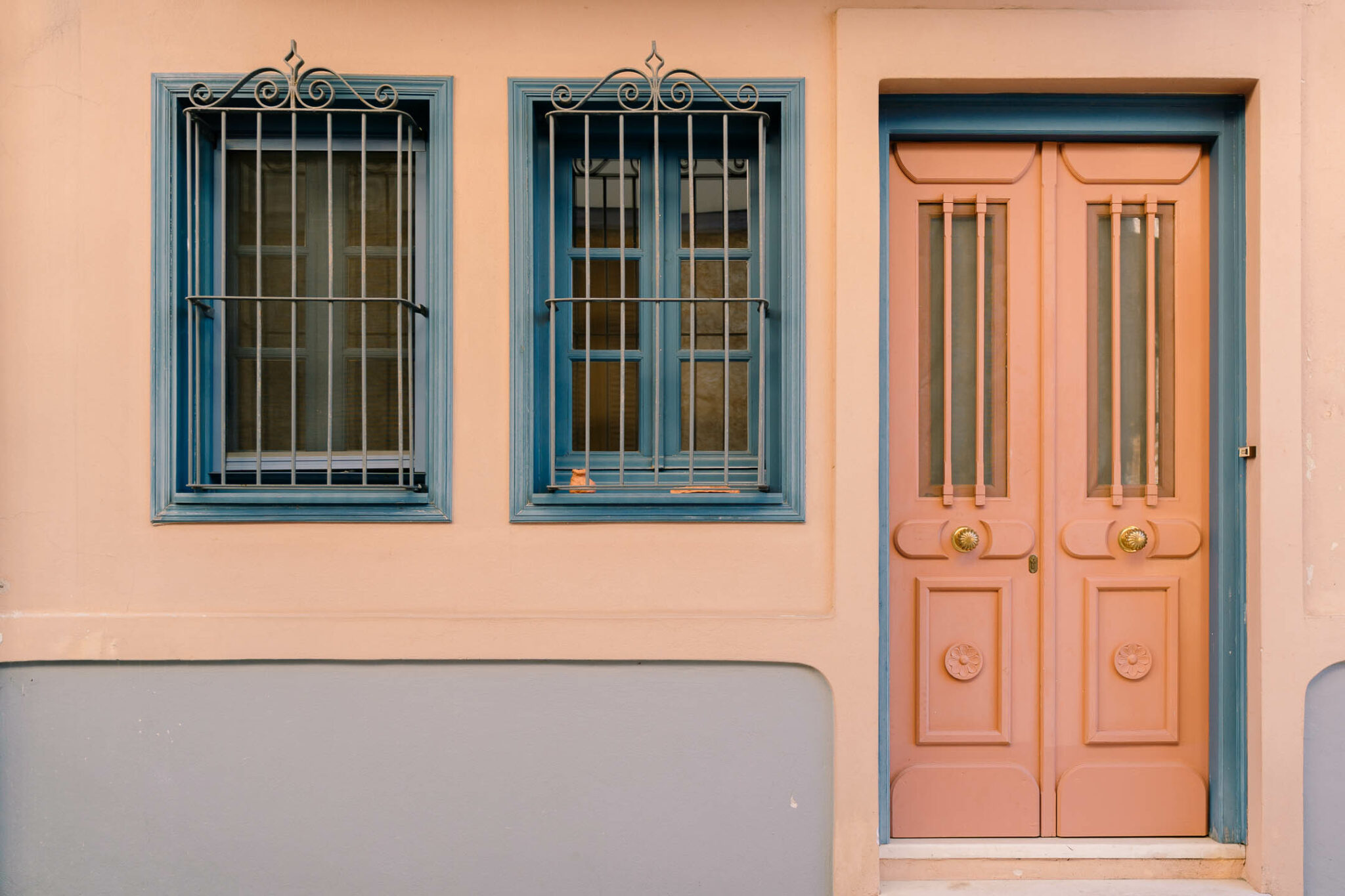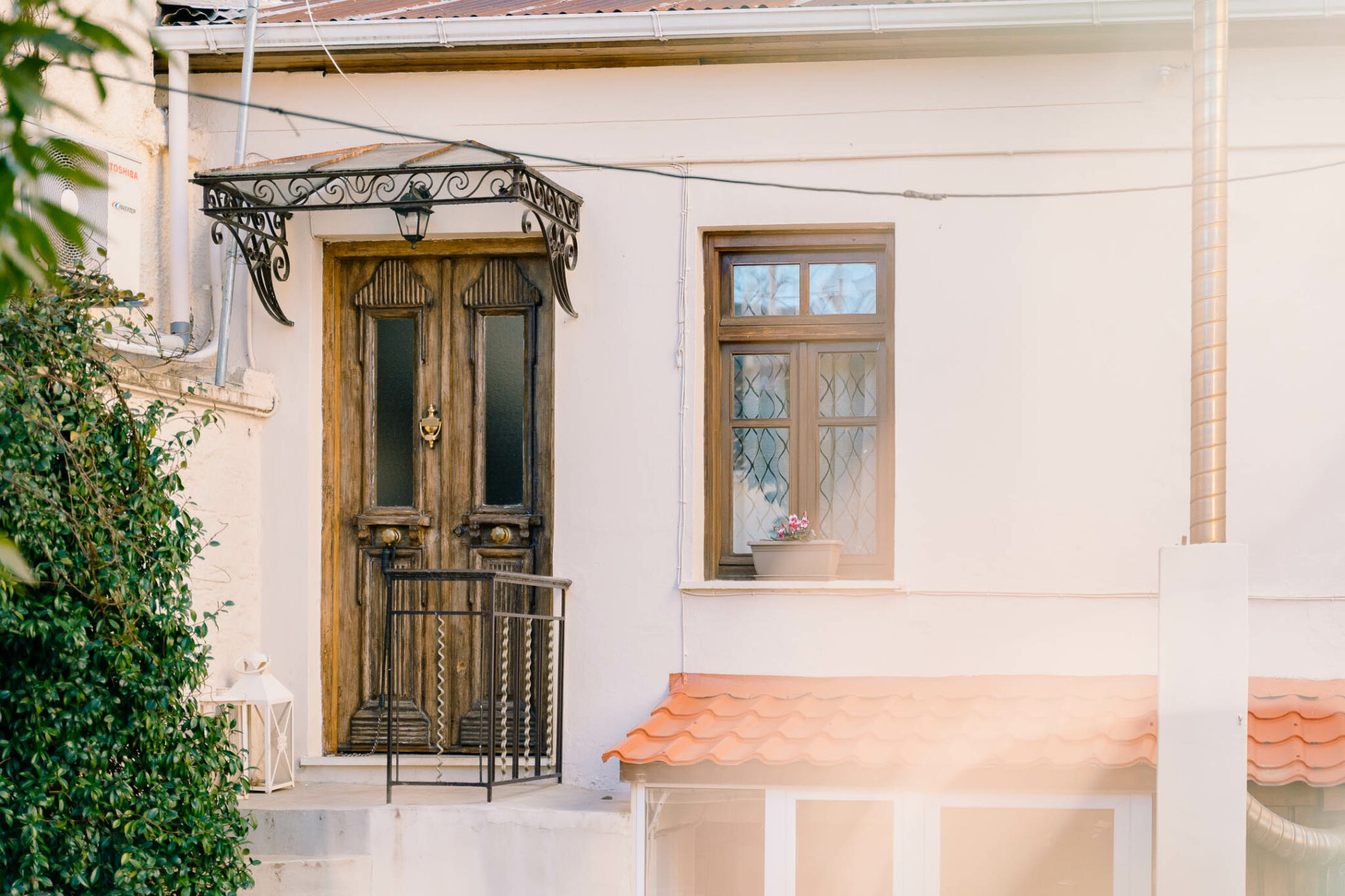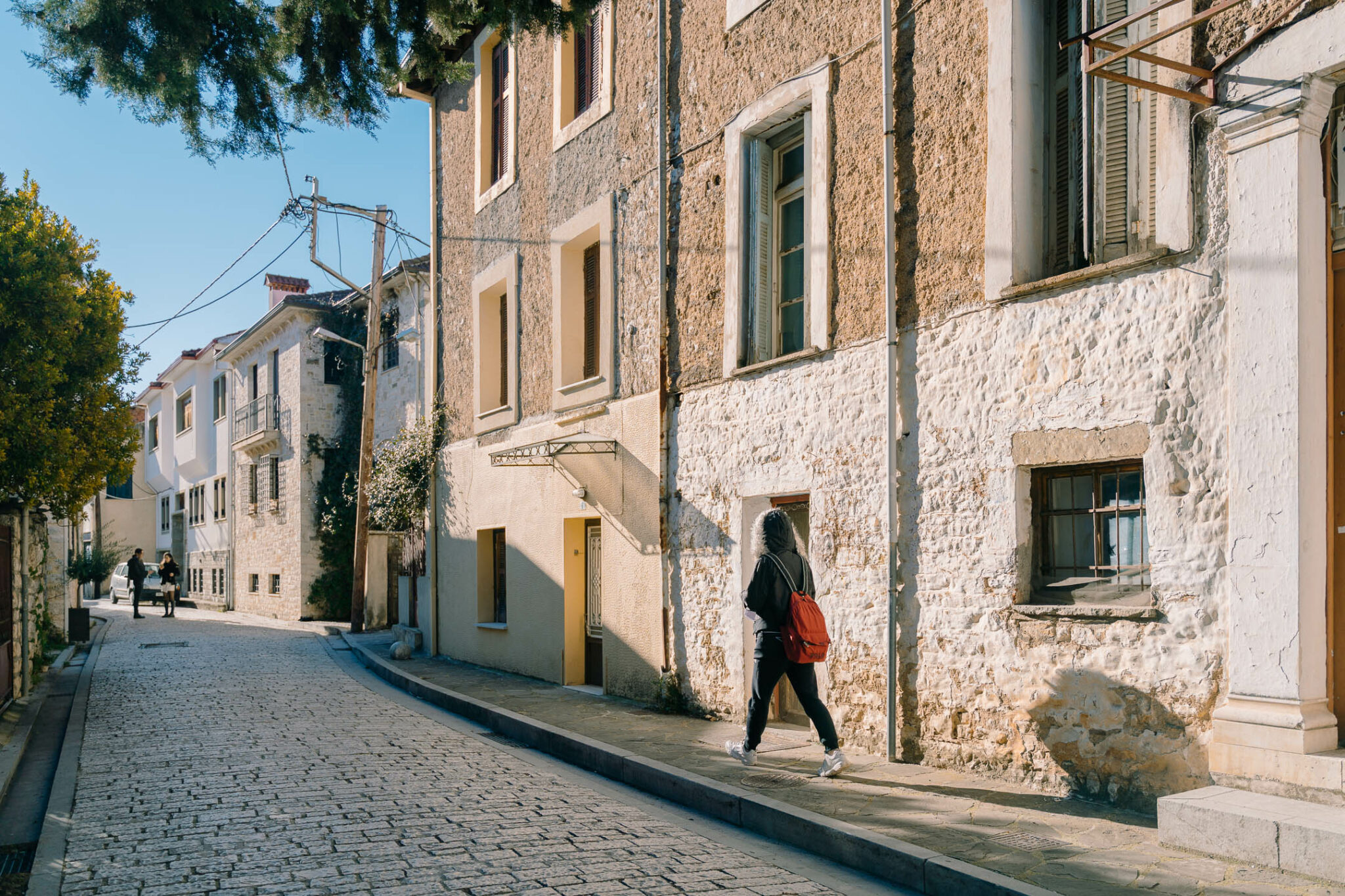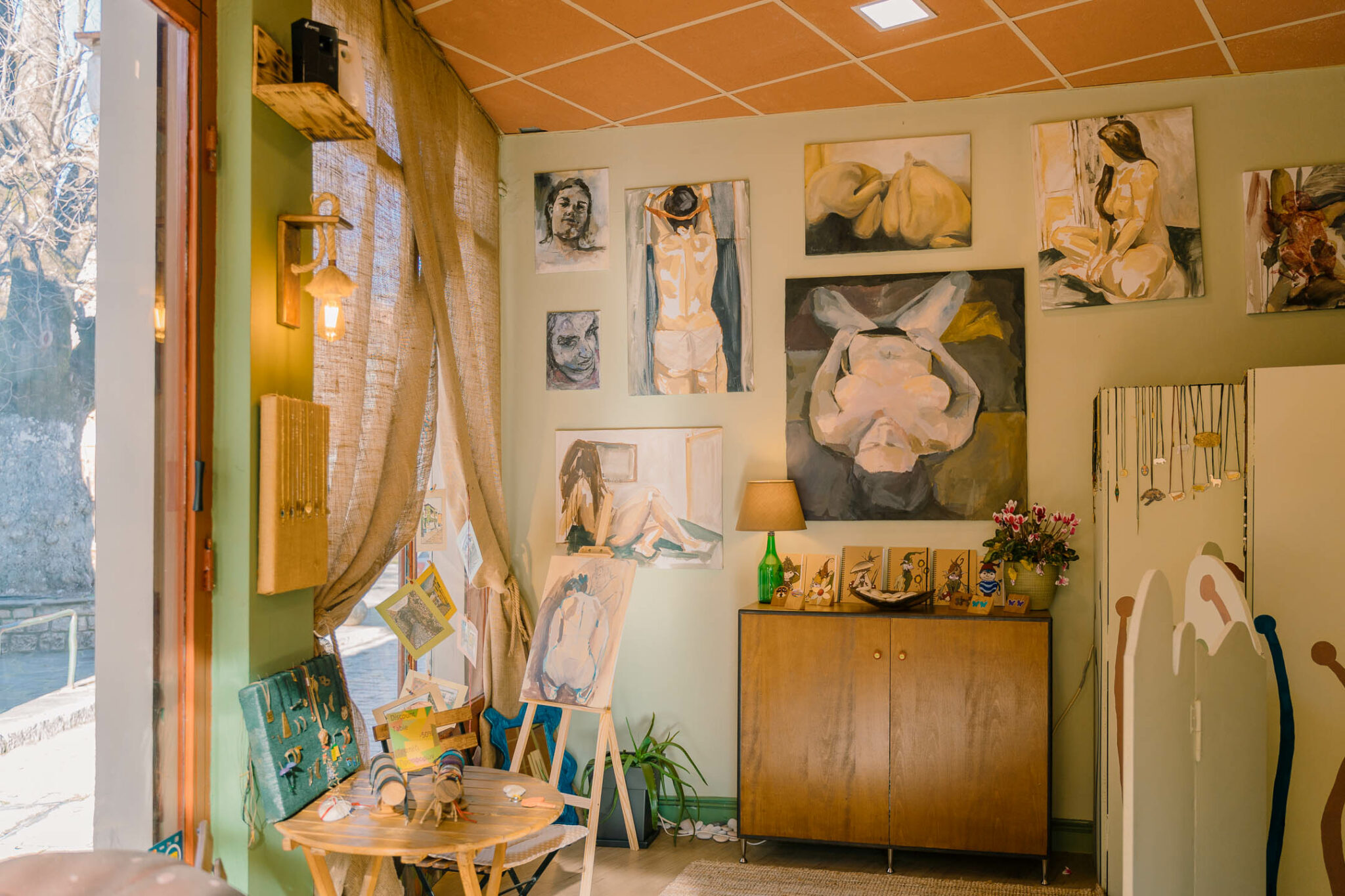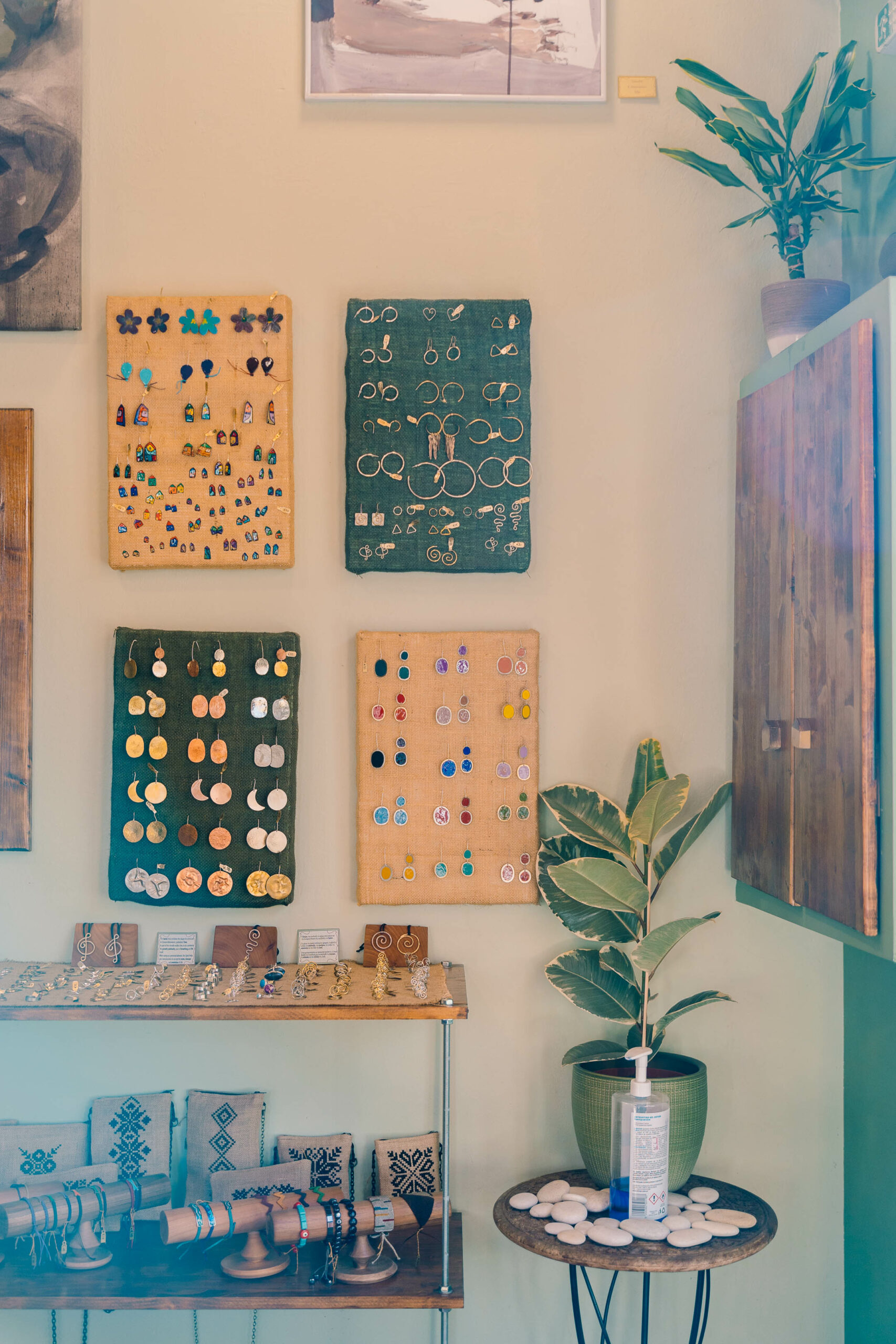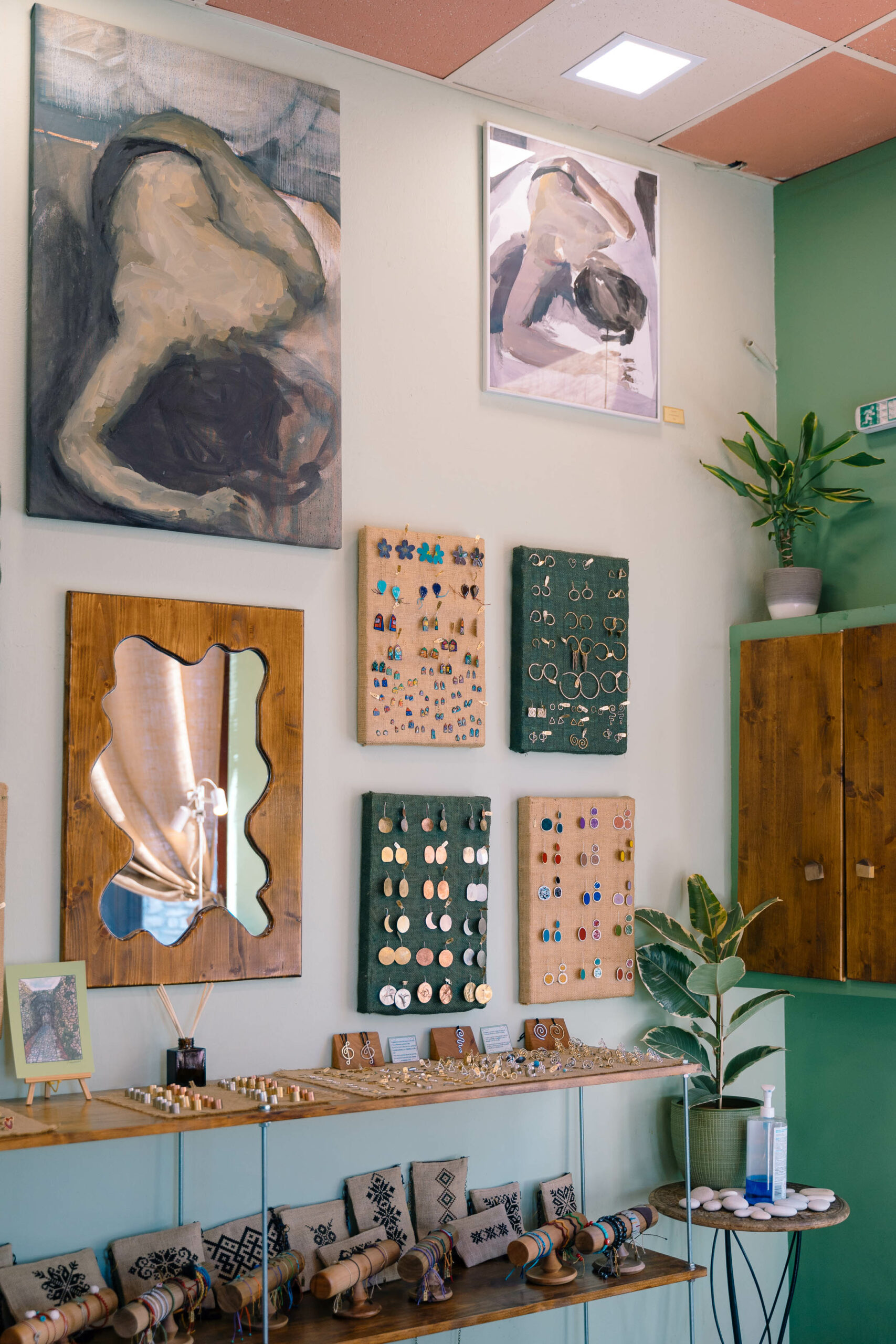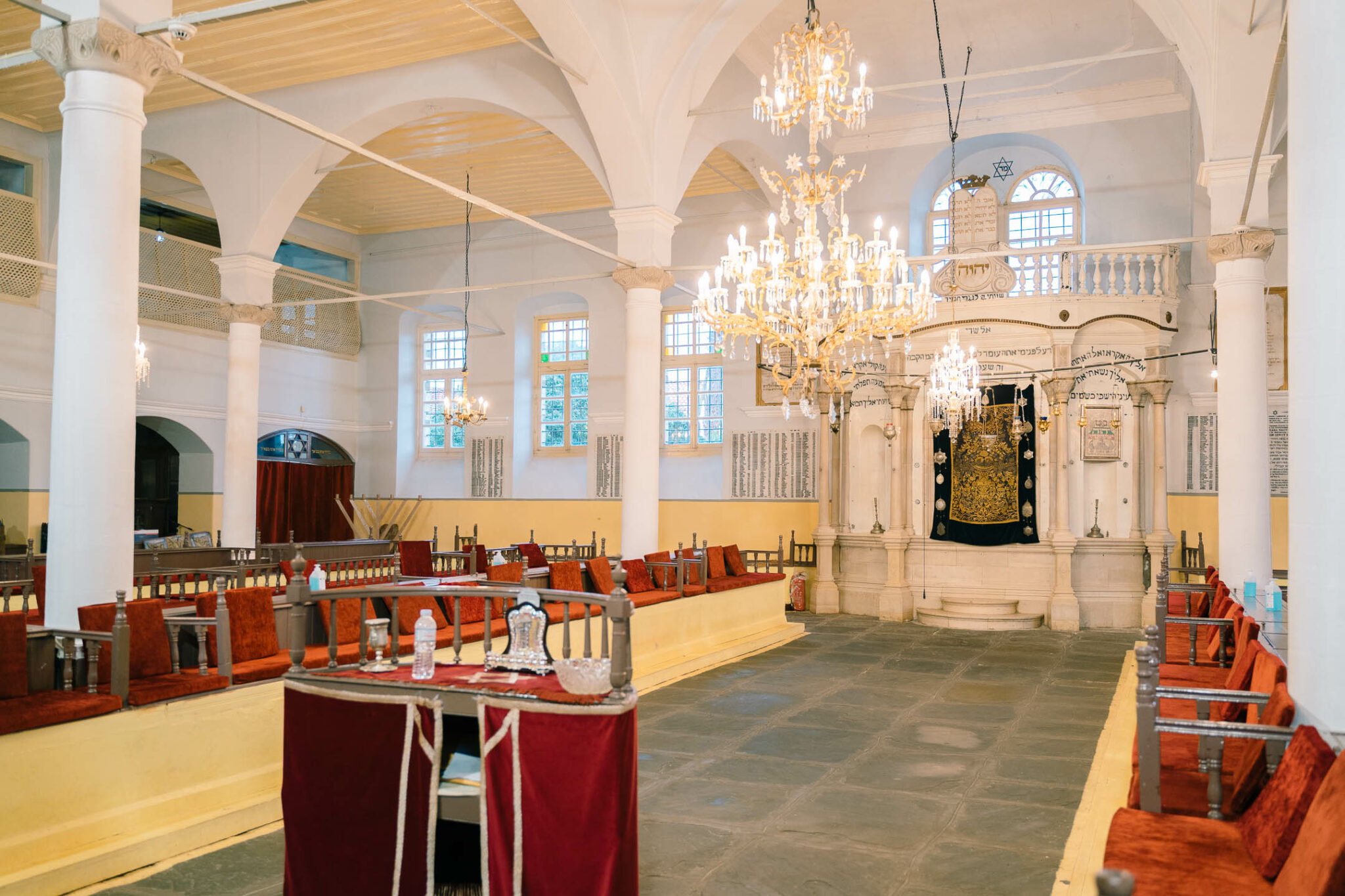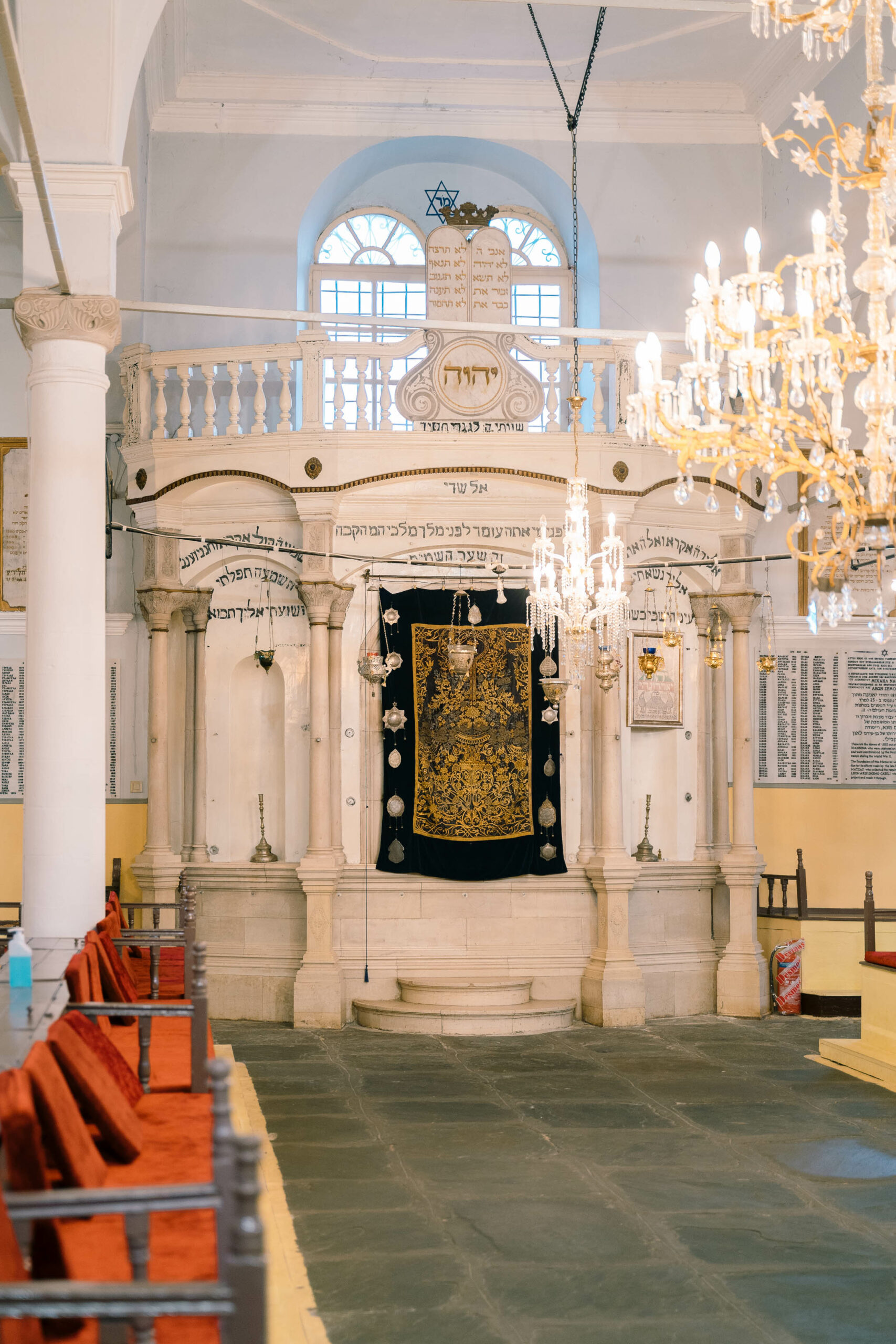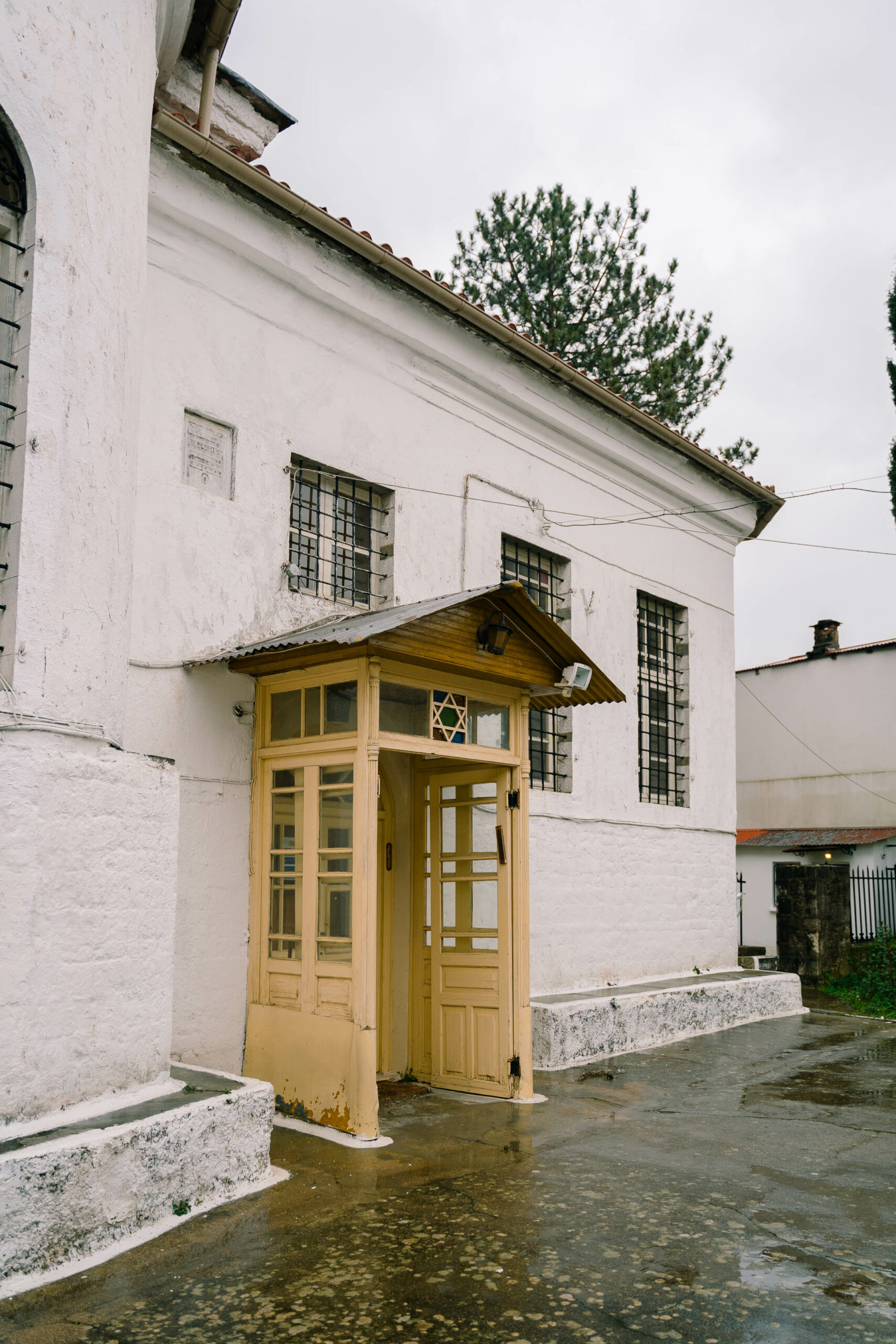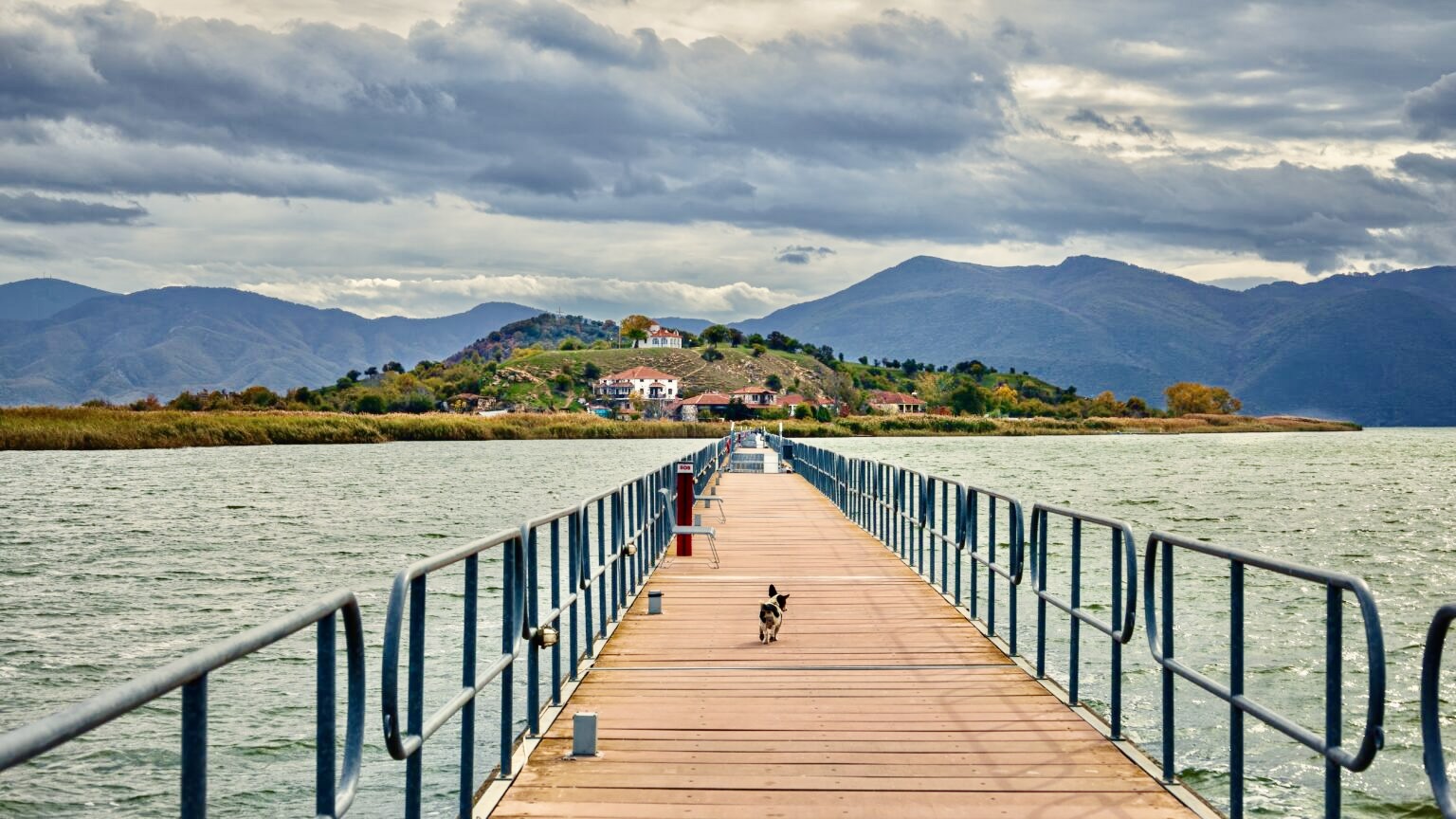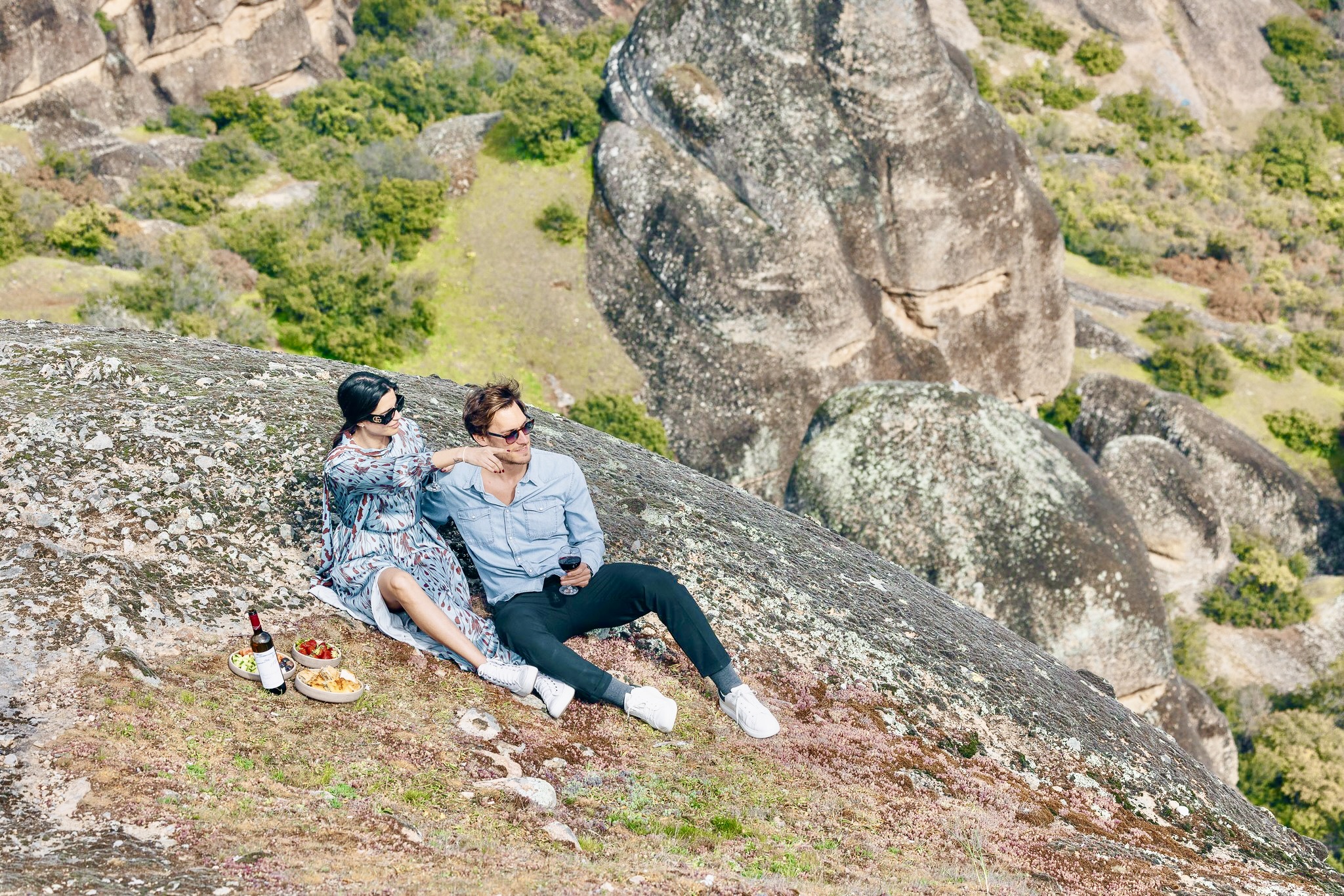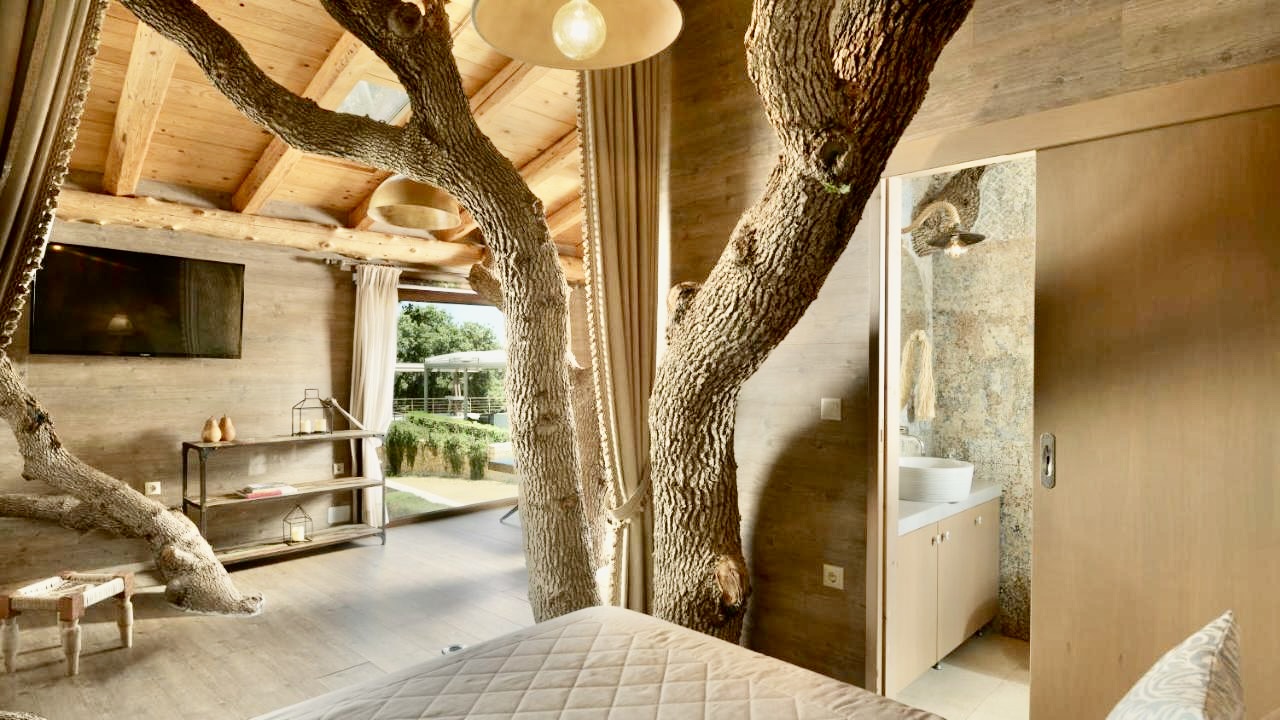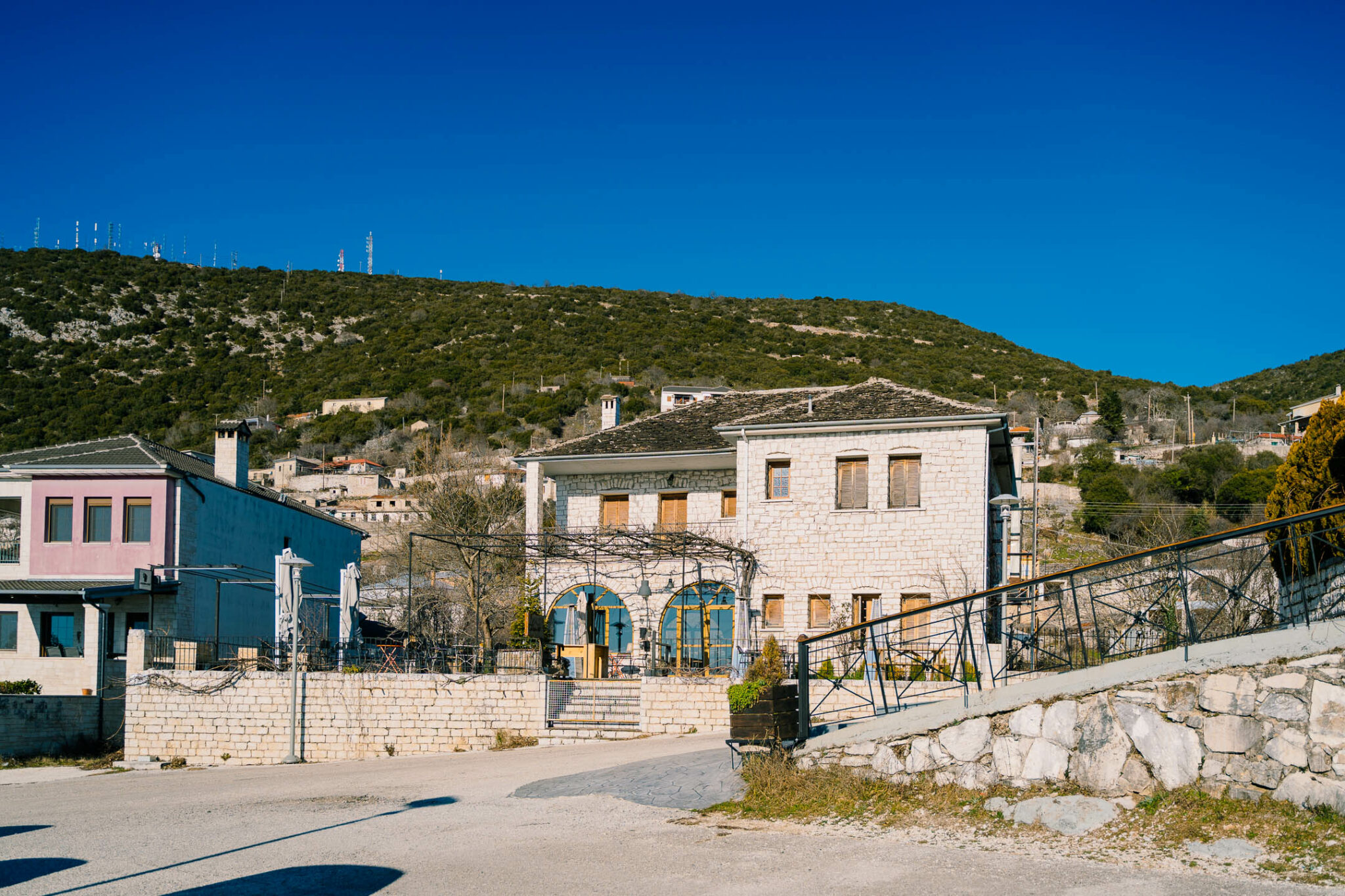Mosques, turbans, mausoleums, madrasas. Fortifications, Byzantine towers, Ottoman hammams and kitchens. Glorious cathedrals and barracks.
The castle town of Ioannina is an autonomous, enchanting world that transports you through the history, beauty and architecture of a city that straddles the line between West and East, with its own unique history. A part of the castle town has been inhabited for centuries. Alive and vibrant, it is still home to hundreds of families and dozens of thriving businesses.
Apart from its residential area, two other places, real archaeological parks, await the visitor to discover them.
Within the outer fortified enclosure of the castle town, the two natural hills had already been formed as citadels during the Byzantine era. The southeastern acropolis is known as Its Kale and the northeastern one as the Acropolis of Aslan Pasha.
The acropolis of Its Kale
An uphill paved path leads to the acropolis of Its Kale. Passing through the imposing stone entrance, it’s like embarking on a real journey through time.
Historical sources testify that during the Byzantine period, the houses of the city’s rulers were built here, along with the metropolitan church of Taxiarhes and the church of Pantokrator. During the period of Ali Pasha – a time of great economic power and glory for the city- Ali Pasha’s Serai and many military buildings for his officials were located here.
The Byzantine museum
In 1958, the Greek army built a two-storey “royal pavilion” on the ruins of the Serai, which today houses the famous Byzantine Museum of the city. An enchanting tour of the beauty, power and uniqueness of Byzantine Epirus unfolds within its halls. Ecclesiastical and secular objects take us on a journey from the 4th to the 19th century throughout Epirus. Rare ceramics guide us through the everyday life of a house in Ioannina, in the kitchen, in the dining room, in the living room. Hundreds of coins tell the economic history of a region that accumulated fabulous wealth. They tell us about the journeys of the merchants of the region, their adventures from Odessa to Vienna, their goods and their value. Ecclesiastical relics, hagiographies, altarpieces, embroidered epitaphs, vestments map the presence and power of the church throughout Byzantium. Impressive Byzantine sculptures, marble columns, Corinthian capitals, sculpted architectural elements, mainly from temples in the region of Thesprotia, testify to the level of craftsmanship and art in the region.
The neighbouring vault, which is essentially a branch of the Byzantine Museum of Ioannina, houses the collections of silversmithing objects, mainly from the collections of Archbishop Spyridon Vlahos and Konstantinos Ioannidis. The art of silversmithing, mainly during the post-Byzantine period, with its techniques and unique creations, unfolds in the halls of the treasury.
At the highest point of the Acropolis of Its Kale, the imposing building of the Fethiye mosque steals the show. According to archaeological research, a Byzantine church was built here, from which only two marble columns of its iconostasis survive. The latter were incorporated into the first mosque built in the 15th century, shortly after the city’s subjugation to the Ottomans. The building was impressive and travellers of the time described its grandeur in detail. The mosque was rebuilt in the late 18th century and Ali Pasha converted it into a mosque for his Serai.
Today the Mosque hosts an exhibition on the city of Ioannina during the late Ottoman rule and on the life and work of Ali Pasha. The visitor’s spatial experience at the Fethiye Mosque is something rare. The Mosque is a one-room structure with a high dome and a wooden balcony. Elaborate murals with plants, geometric shapes and Arabic inscriptions create a unique universe, while later interventions bear witness to the spirit of neoclassicism that prevailed in Ioannina during the late Ottoman period.
Just outside the Mosque, the tomb of Ali Pasha, with its vaulted iron railing, hosts the graves of Ali Pasha and one of his wives, recalling the role of this great statesman, who sealed with his presence the developments in the region of Epirus, but also in the whole history of the Greek uprising.
The acropolis of Aslan Pasha
The northeastern citadel of the ψastle is known as the acropolis of Aslan Pasha.
On its southern side, the Byzantine gate and a circular tower that protected it in the past are preserved. This Acropolis was called Epano Goulas and here was the seat of the Despot of Ioannina, the Byzantine ruler of the city. In addition to the ruler’s palace, the church of Agios Ioannis was also located here. During the period when the city was under Ottoman rule, in 1611 an important rebellion took place, led by Dionysius the Philosopher. The rebellion was drowned in blood, the church of St. John was demolished and the Aslan Pasha mosque and its neighbouring madrasa, as the seminary was called, were built in its place. Even today, these buildings stand majestically and whisper stories of the past.
The mosque of Aslan Pasha is today the home of the Ethnographic Museum of Ioannina. Its beautiful halls host three rare collections, Greek, Jewish and Turkish, representative of the inhabitants who marked the history of the city. Prominent families have donated objects and collections, mostly from the last three centuries, which unfold the multiculturalism, prosperity and uniqueness of a city that is vibrant, thriving and flourishing. At the back of the room is the uniform of the chieftain Poutetsis, who was killed fighting for the liberation of the city. His name has even been given to a main street in the city.
The minaret of the Aslan Pasha mosque became famous when a cyclone four years ago in 2018 knocked it to the ground and caused significant damage. It was quickly restored and now stands at its height overlooking the Lake of Ioannina.
Next to the mosque, the madrasas and kitchens, also built in the early 17th century, apart from their rare beauty, are also architectural monuments and provide us with valuable information about the construction techniques and the unique craftsmen who brought the area into being. Today, the main classroom of the madrasa houses a collection of weapons, ceramics and coins, which F. Rapakousis donated to the Municipality of Ioannina.
The Old City of Ioannina
After our historical wanderings we got lost among the narrow streets with the two-storey old houses of the castle town of Ioannina. We admired the houses, met people and asked about their daily life. A quiet neighbourhood, with the walls of the castle proving able to keep out the traffic and buzz of the modern city. We made a stop at Anka Arts, at 8 Andronikos Paleologou Street, where Stavroula and Katerina, mother and daughter, make beautiful ornaments, earrings, rings, necklaces and several other works of art. “Our love of crafting brought us here to the castle town”.
“Until a few years ago I was in Athens working as a real estate agent, until I decided to come to Ioannina and find a new occupation” says Stavroula, the mother, as she shows us some of the items they make. Her daughter, Katerina, is studying at the School of Plastic Arts and Art Sciences at the University of Ioannina, and has found a space here for additional creative pursuits. We continue our walk among some completely abandoned and some recently and exquisitely restored houses. In this neighbourhood lurks another witness to the city’s history.
The Jewish Synagogue of Ioannina, one of the largest synagogues in the country, can accommodate almost 400 worshippers. Its enclosed courtyard features a well and a fountain, while behind its arched gate there are 1,750 inscribed names. Names of people, members of the thriving Jewish community of Ioannina, who were transported in the spring of 1944 to Nazi concentration camps, where they met a tragic death. Today the community is small and the synagogue usually operates once a year.
The walk ends in the alleys with the small boutique hotels, the pop-up delicatessens and that feeling that this place is inexhaustible and uniquely charming.
Read also:



